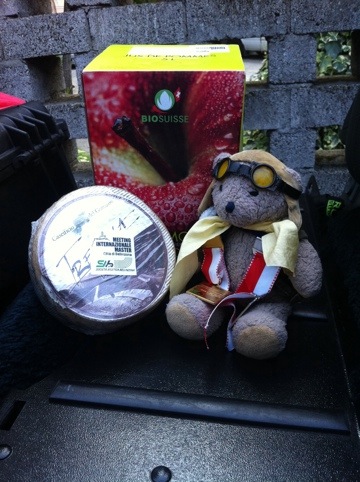Nothing to report on the running front. I’ve been up in the mountains for the past two days. The Dolomites, above Cortina d’Ampezzo in the very north of Italy, to be a bit more precise.
Spending time here has always been an integral part of the journey I’ve been on for nearly a month now. Those of you who know me will know something of my attachment to this area, and the work I later came to do here. This all came about in the late 1980’s through a mixture of good fortune, a good friend and some sheer hard graft. Those of you who knew me well in the 1990’s will fully understand why I am here on this journey, and what it means to me.
The good friend I mentioned went by the name of Butch. His real name was Frederick, but I never heard him called anything other than Butch. Even by his wife. An extraordinary guy, and given the connotations latterly attaching to a nickname like that, a man of real, unflinching character not to ditch it for something else.
Butch joined the climbing club I’d helped start in the late 1970’s. He was already a full member of the Alpine Club, had travelled and worked in many parts of the world, and was, it must be said, old enough to be the father of any of the rest of us in the club at that time. Butch also had a thing about the Dolomites. He’d spent time there regularly in the latter part of the 1950’s and was on the lookout for a climbing partner to return there with. It took until 1986, but he persuaded me in the end.
The place had changed beyond all recognition in the time since Butch had been there, except up in the mountains, and in the mountain huts. Unbelievably (to me) we even met the wife of an old hut guardian who remembered him! Not that it was hard, really. Think slightly slimmed down version of Ronnie Drew, from The Dubliners, similar Dublin-by-way-of-other-places Irish brogue, and humour and annecdotes well beyond the gifts any one man ought to have posessed.
We found ourselves in the Sexten Dolomites early in our jaunt. I’d never been anywhere like it before. Huge pillars of rock, Mountains like a young child would draw them. All either up or down. Very little sideways. Our mixture of good weather, good choice of routes to climb, including the first British ascent of one, and Butch’s natural garrulous nature in the mountain huts of an evening, made the trip for me. Frankly, it changed the course of my life for the ensuing twenty or more years. Tales for another time, perhaps.
I spent today in the Sexten Dolomites too, visiting a couple of readily accessible places Butch and I knew from those days. He was like a ghost behind me on the paths. I half expected to look back and see him sitting on a rock enjoying one of his “funf Minuten Zigaretten Pause”. But that wasn’t to be.
Because Butch died last Christmas. His descent into the hell of prostate cancer was at the time of my own battles with severe depression, and we didn’t even speak on the telephone. One of his daughters rang me in January. I’d been away, and missed his funeral too. I could have used today to scatter his ashes or something. I’ve actually no idea what he would have wanted. We were living life to the full on our original visit, and on several follow-up trips to the Dolomites, such that death was never a topic.
I mourn his passing and think of him often, but I owe to him the joy I get from places like the Sexten Dolomites. And today, that was some joy.

